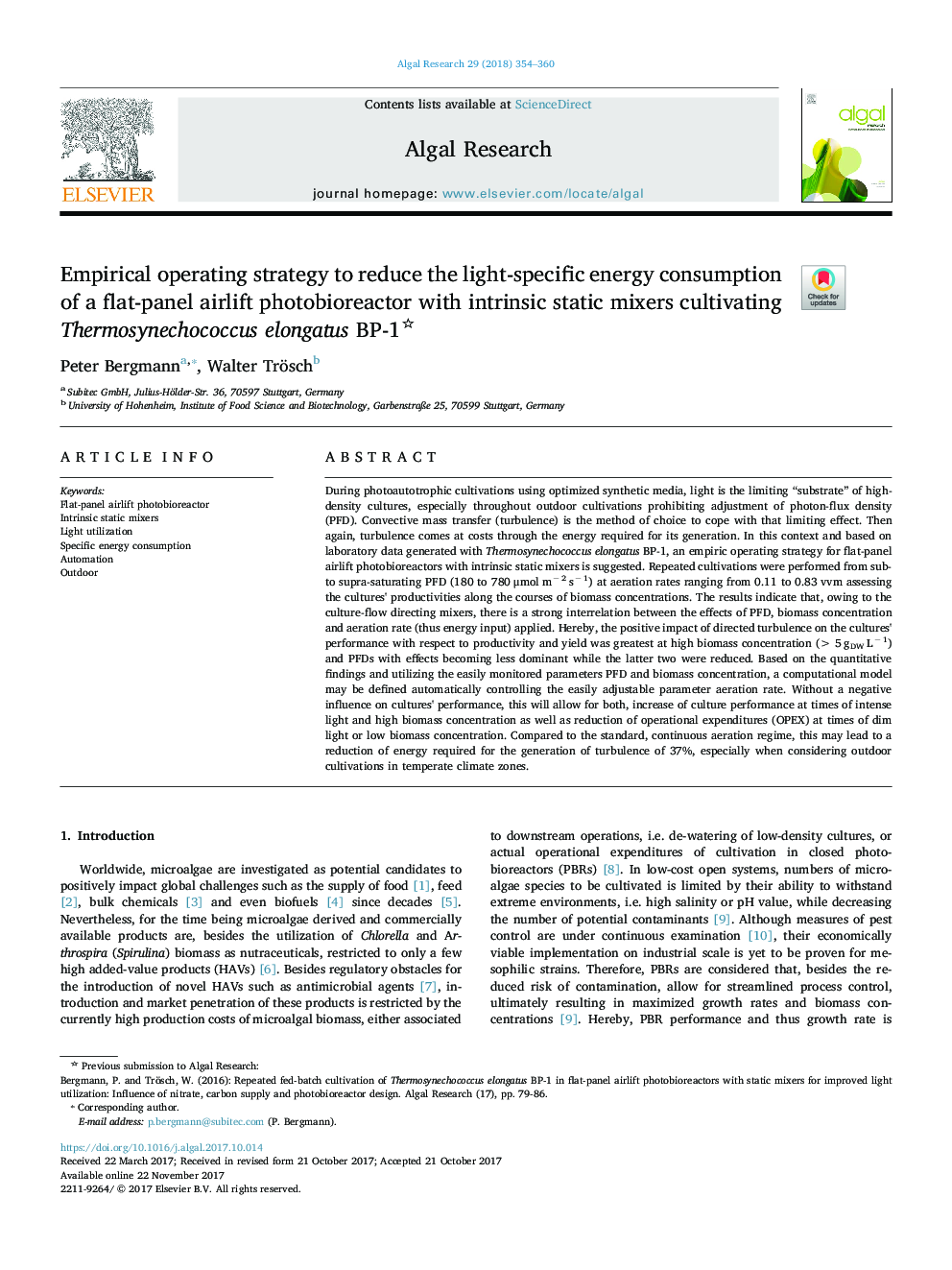| کد مقاله | کد نشریه | سال انتشار | مقاله انگلیسی | نسخه تمام متن |
|---|---|---|---|---|
| 8086387 | 1521804 | 2018 | 7 صفحه PDF | دانلود رایگان |
عنوان انگلیسی مقاله ISI
Empirical operating strategy to reduce the light-specific energy consumption of a flat-panel airlift photobioreactor with intrinsic static mixers cultivating Thermosynechococcus elongatus BP-1
دانلود مقاله + سفارش ترجمه
دانلود مقاله ISI انگلیسی
رایگان برای ایرانیان
کلمات کلیدی
موضوعات مرتبط
مهندسی و علوم پایه
مهندسی انرژی
انرژی های تجدید پذیر، توسعه پایدار و محیط زیست
پیش نمایش صفحه اول مقاله

چکیده انگلیسی
During photoautotrophic cultivations using optimized synthetic media, light is the limiting “substrate” of high-density cultures, especially throughout outdoor cultivations prohibiting adjustment of photon-flux density (PFD). Convective mass transfer (turbulence) is the method of choice to cope with that limiting effect. Then again, turbulence comes at costs through the energy required for its generation. In this context and based on laboratory data generated with Thermosynechococcus elongatus BP-1, an empiric operating strategy for flat-panel airlift photobioreactors with intrinsic static mixers is suggested. Repeated cultivations were performed from sub- to supra-saturating PFD (180 to 780 μmol mâ 2 sâ 1) at aeration rates ranging from 0.11 to 0.83 vvm assessing the cultures' productivities along the courses of biomass concentrations. The results indicate that, owing to the culture-flow directing mixers, there is a strong interrelation between the effects of PFD, biomass concentration and aeration rate (thus energy input) applied. Hereby, the positive impact of directed turbulence on the cultures' performance with respect to productivity and yield was greatest at high biomass concentration (> 5 gDW Lâ 1) and PFDs with effects becoming less dominant while the latter two were reduced. Based on the quantitative findings and utilizing the easily monitored parameters PFD and biomass concentration, a computational model may be defined automatically controlling the easily adjustable parameter aeration rate. Without a negative influence on cultures' performance, this will allow for both, increase of culture performance at times of intense light and high biomass concentration as well as reduction of operational expenditures (OPEX) at times of dim light or low biomass concentration. Compared to the standard, continuous aeration regime, this may lead to a reduction of energy required for the generation of turbulence of 37%, especially when considering outdoor cultivations in temperate climate zones.
ناشر
Database: Elsevier - ScienceDirect (ساینس دایرکت)
Journal: Algal Research - Volume 29, January 2018, Pages 354-360
Journal: Algal Research - Volume 29, January 2018, Pages 354-360
نویسندگان
Peter Bergmann, Walter Trösch,